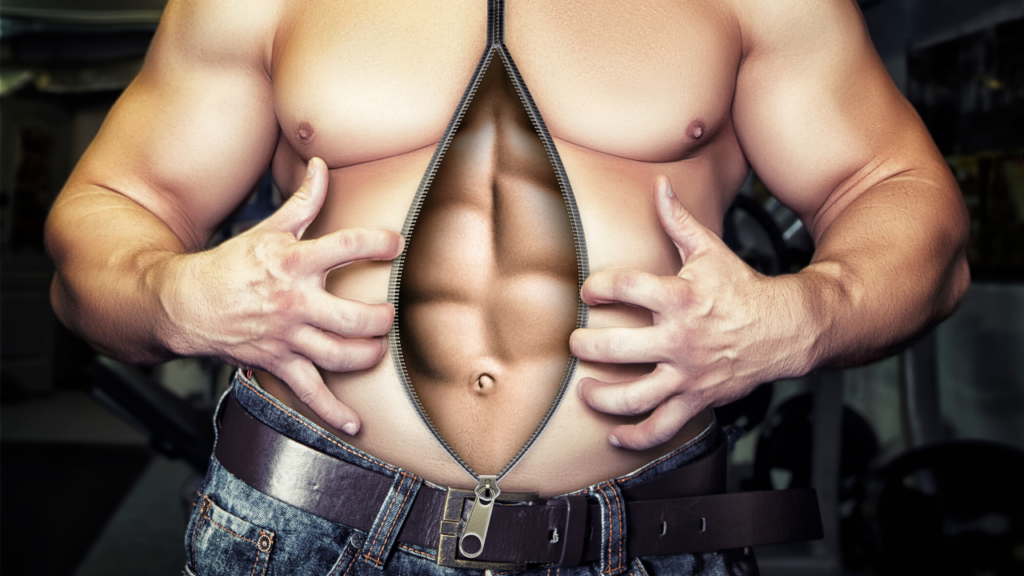One of the biggest misconceptions in fitness today is on nutrition and how you’re supposed to go about it.
When you saw the title of this post, I’m sure you thought it would be about some insane diet or workout program that no one has ever heard of before. But if it was, how would it be sustainable?
You see, sustainability starts and ends with things that you can do long term, not something that just brings quick results.
There are plenty of methods and trainers out there that are all geared around starving you to death. Most people are okay with this, for a few weeks at least. But when life hits and you realise happiness doesn’t revolve around just being in shape, it becomes a lot less appealing.
Feeding your muscles and burning the fat only comes down to a couple of basic principles.
Starve The Fat
This will give you the “more ripped and toned” look. That has 100% to do with body fat. Lower your body fat and you HAVE to look better.
Most individuals want to see their abs or get close to seeing their abs. For most men, this is around 10% body fat. For most women, this is around 18%.
For those of you reading this who don’t know, nutrition is 90% of your results. What you choose to eat (or not eat) is directly correlated to how you look. Working out is a very small portion of the results.
To lose body fat, you must be in a caloric deficit. To be in a caloric deficit means eating less food than your body needs to maintain its weight. When you do his, your body will look to stored fat to use as energy. It’s as simple as that.
You should try to eat in a caloric deficit. To ensure you’re eating in a caloric deficit, I use the Katch-McArdle formula as shown:
BMR = 370 + (21.6 x LBM), where LBM = [total weight (kg)) x (100 – body fat %)] x 1.2
BMR (Basal Metabolic Rate) is the number of calories your body burns in any specific day. Once you have your BMR, subtract 200 from it, and that should put you in a caloric deficit to start with.
You lose body fat 100% of the time if you follow this formula. Then as the weeks go by, you adjust your calories based on your results.
For example, if you lose 2 lbs. in the first week, then stay there. You are still in a caloric deficit and burning body fat. If you stayed the same weight or even gained some, you either are no longer in a deficit or you’re eating too much. There is no other explanation. (Women’s monthly periods, stress, and other factors can affect this but not significantly.)
Feed The Muscles Nutrition


Once you have lost enough body fat and are happy with how lean you are, you’ll want to start adding muscle. Keep in mind that if you’re new to lifting or haven’t lifted in a long time, you can gain muscle and lose body fat at the same time for a short time period.
For everyone else, you need to focus on one thing at a time. It takes two completely different environments for the body to lose body fat or gain muscle (caloric deficit for fat loss & caloric surplus for muscle growth).
To start adding muscle, you’ll want to eat in a caloric surplus. This will give your body extra calories to add lean muscle tissue.
If you don’t eat enough, it doesn’t matter how hard or how long you work out for. You must give your body extra calories to ensure it has something to build muscle with.
Use the same formula as above and add 200-500 calories to start with. Aim to gain 1-2 lbs. a week. If you’re not gaining weight, then you need to add in more calories. If you’re gaining more than 2 lbs. a week, you need to cut back.
Any thing over 2 lbs. in a week is typically going to be pure body fat. Make sure you are lifting weights as well. Without stimulus, the muscles will not grow even with extra food intake.
Your body uses what you eat around the clock 24/7. If you are not consistent with eating right and staying on point with it, all the hours in the gym won’t do you any good. You HAVE to start with what you eat.
In fact, you don’t even have to do cardio if you don’t want to (or do the minimum for heart health) as long as you stay on top of your nutrition. If you like it, have at it, but it isn’t necessary. Nutrition is #1!
Adapted from Tanner Chidester

